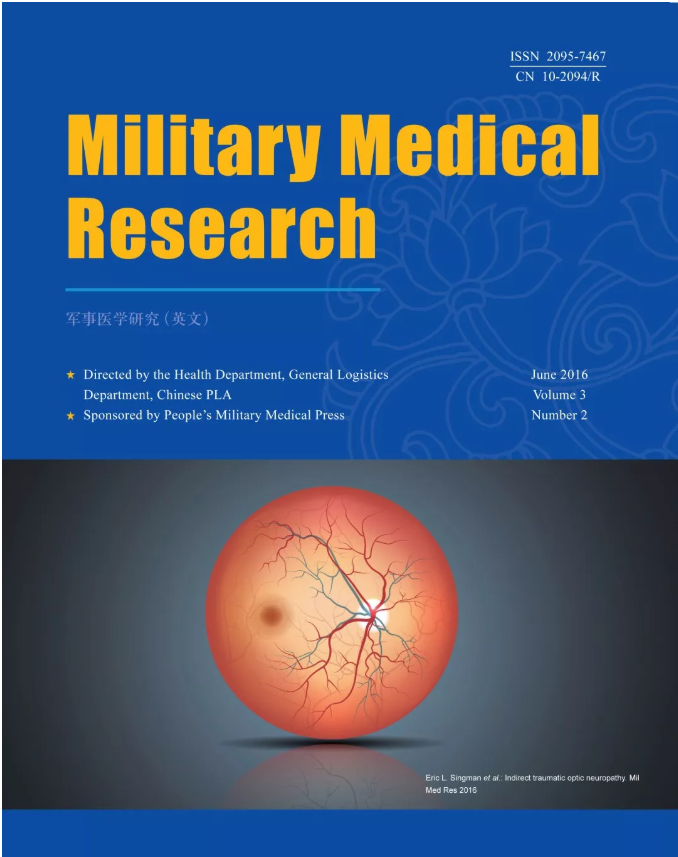Neuronal Panx1 drives peripheral sensitization in experimental plantar inflammatory pain
IF 16.7
2区 医学
Q1 MEDICINE, GENERAL & INTERNAL
引用次数: 0
Abstract
The channel-forming protein Pannexin1 (Panx1) has been implicated in both human studies and animal models of chronic pain, but the underlying mechanisms remain incompletely understood. Wild-type (WT, n = 24), global Panx1 KO (n = 24), neuron-specific Panx1 KO (n = 20), and glia-specific Panx1 KO (n = 20) mice were used in this study at Albert Einstein College of Medicine. The von Frey test was used to quantify pain sensitivity in these mice following complete Freund’s adjuvant (CFA) injection (7, 14, and 21 d). The qRT-PCR was employed to measure mRNA levels of Panx1, Panx2, Panx3, Cx43, Calhm1, and β-catenin. Laser scanning confocal microscopy imaging, Sholl analysis, and electrophysiology were utilized to evaluate the impact of Panx1 on neuronal excitability and morphology in Neuro2a and dorsal root ganglion neurons (DRGNs) in which Panx1 expression or function was manipulated. Ethidium bromide (EtBr) dye uptake assay and calcium imaging were employed to investigate the role of Panx1 in adenosine triphosphate (ATP) sensitivity. β-galactosidase (β-gal) staining was applied to determine the relative cellular expression levels of Panx1 in trigeminal ganglia (TG) and DRG of transgenic mice. Global or neuron-specific Panx1 deletion markedly decreased pain thresholds after CFA stimuli (7, 14, and 21 d; P < 0.01 vs. WT group), indicating that Panx1 was positively correlated with pain sensitivity. In Neuro2a, global Panx1 deletion dramatically reduced neurite extension and inward currents compared to the WT group (P < 0.05), revealing that Panx1 enhanced neurogenesis and excitability. Similarly, global Panx1 deletion significantly suppressed Wnt/β-catenin dependent DRG neurogenesis following 5 d of nerve growth factor (NGF) treatment (P < 0.01 vs. WT group). Moreover, Panx1 channels enhanced DRG neuron response to ATP after CFA injection (P < 0.01 vs. Panx1 KO group). Furthermore, ATP release increased Ca2+ responses in DRGNs and satellite glial cells surrounding them following 7 d of CFA treatment (P < 0.01 vs. Panx1 KO group), suggesting that Panx1 in glia also impacts exaggerated neuronal excitability. Interestingly, neuron-specific Panx1 deletion was found to markedly reduce differentiation in cultured DRGNs, as evidenced by stunted neurite outgrowth (P < 0.05 vs. Panx1 KO group; P < 0.01 vs. WT group or GFAP-Cre group), blunted activation of Wnt/β-catenin signaling (P < 0.01 vs. WT, Panx1 KO and GFAP-Cre groups), and diminished cell excitability (P < 0.01 vs. GFAP-Cre group) and response to ATP stimulation (P < 0.01 vs. WT group). Analysis of β-gal staining showed that cellular expression levels of Panx1 in neurons are significantly higher (2.5-fold increase) in the DRG than in the TG. The present study revealed that neuronal Panx1 is a prominent driver of peripheral sensitivity in the setting of inflammatory pain through cell-autonomous effects on neuronal excitability. This hyperexcitability dependence on neuronal Panx1 contrasts with inflammatory orofacial pain, where similar studies revealed a prominent role for glial Panx1. The apparent differences in Panx1 expression in neuronal and non-neuronal TG and DRG cells are likely responsible for the distinct impact of these cell types in the two pain models.神经元 Panx1 驱动实验性足底炎症性疼痛的外周敏感化
通道形成蛋白 Pannexin1(Panx1)与慢性疼痛的人类研究和动物模型都有关联,但其潜在机制仍不完全清楚。阿尔伯特-爱因斯坦医学院在这项研究中使用了野生型(WT,n = 24)、整体 Panx1 KO(n = 24)、神经元特异性 Panx1 KO(n = 20)和神经胶质细胞特异性 Panx1 KO(n = 20)小鼠。在注射完全弗氏佐剂(CFA)(7、14 和 21 d)后,使用 von Frey 试验量化这些小鼠的痛觉敏感性。采用qRT-PCR方法测量Panx1、Panx2、Panx3、Cx43、Calhm1和β-catenin的mRNA水平。激光扫描共聚焦显微镜成像、Sholl分析和电生理学被用来评估Panx1对Neuro2a和背根神经节神经元(DRGNs)神经元兴奋性和形态的影响,其中Panx1的表达或功能被操纵。利用溴化乙锭(EtBr)染料摄取测定和钙成像研究了Panx1在三磷酸腺苷(ATP)敏感性中的作用。应用β-半乳糖苷酶(β-gal)染色法确定了Panx1在小鼠三叉神经节(TG)和DRG中的相对细胞表达水平。全局或神经元特异性Panx1缺失显著降低了CFA刺激后的痛阈值(7、14和21 d;与WT组相比,P < 0.01),表明Panx1与痛敏感性呈正相关。在 Neuro2a 中,与 WT 组相比,全局性缺失 Panx1 会显著减少神经元的延伸和内向电流(P < 0.05),这表明 Panx1 能增强神经元的生成和兴奋性。同样,在神经生长因子(NGF)处理 5 d 后,全局性 Panx1 缺失显著抑制了 Wnt/β-catenin 依赖性 DRG 神经发生(与 WT 组相比,P < 0.01)。此外,注射 CFA 后,Panx1 通道增强了 DRG 神经元对 ATP 的反应(与 Panx1 KO 组相比,P < 0.01)。此外,CFA 处理 7 d 后,ATP 释放增加了 DRGN 及其周围卫星胶质细胞的 Ca2+ 反应(P < 0.01 vs. Panx1 KO 组),这表明胶质细胞中的 Panx1 也会影响神经元的兴奋性。有趣的是,神经元特异性的 Panx1 基因缺失会明显降低培养的 DRGN 的分化,表现为神经元突起生长受阻(P < 0.05 vs. Panx1 KO 组;P < 0.01 vs. WT 组或 GFAP-CO 组)。WT 组或 GFAP-Cre 组)、Wnt/β-catenin 信号激活减弱(与 WT、Panx1 KO 和 GFAP-Cre 组相比,P<0.01)、细胞兴奋性降低(与 GFAP-Cre 组相比,P<0.01)以及对 ATP 刺激的反应减弱(与 WT 组相比,P<0.01)。β-gal染色分析表明,Panx1在神经元中的细胞表达水平在DRG中显著高于TG(增加2.5倍)。本研究揭示了神经元 Panx1 通过细胞自主影响神经元的兴奋性,在炎症性疼痛的情况下是外周敏感性的主要驱动因素。这种兴奋性过高对神经元 Panx1 的依赖与炎症性口面部疼痛形成了鲜明对比,后者的类似研究显示神经胶质的 Panx1 起着重要作用。Panx1在神经元和非神经元TG和DRG细胞中表达的明显差异可能是这些细胞类型在两种疼痛模型中产生不同影响的原因。
本文章由计算机程序翻译,如有差异,请以英文原文为准。
求助全文
约1分钟内获得全文
求助全文
来源期刊

Military Medical Research
Medicine-General Medicine
CiteScore
38.40
自引率
2.80%
发文量
485
审稿时长
8 weeks
期刊介绍:
Military Medical Research is an open-access, peer-reviewed journal that aims to share the most up-to-date evidence and innovative discoveries in a wide range of fields, including basic and clinical sciences, translational research, precision medicine, emerging interdisciplinary subjects, and advanced technologies. Our primary focus is on modern military medicine; however, we also encourage submissions from other related areas. This includes, but is not limited to, basic medical research with the potential for translation into practice, as well as clinical research that could impact medical care both in times of warfare and during peacetime military operations.
 求助内容:
求助内容: 应助结果提醒方式:
应助结果提醒方式:


